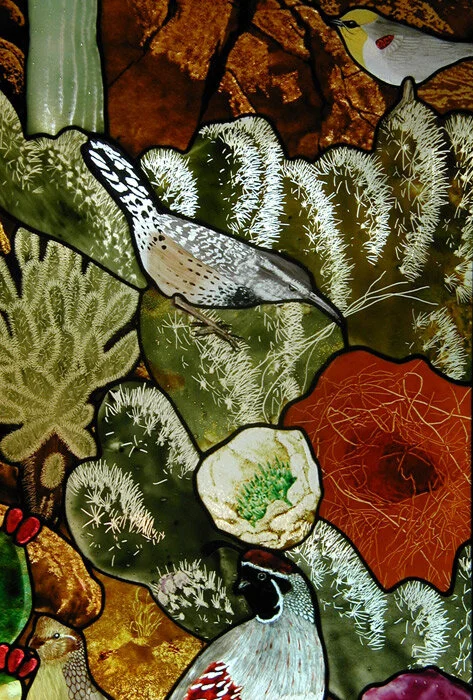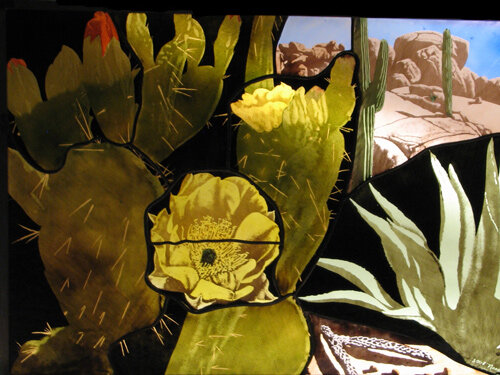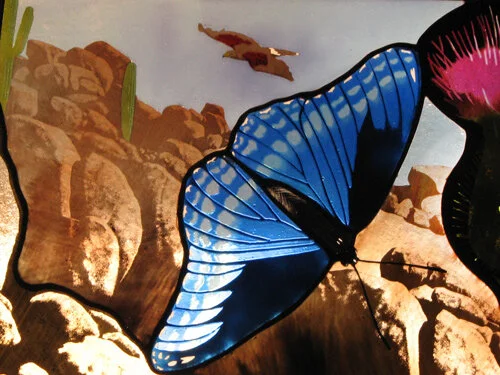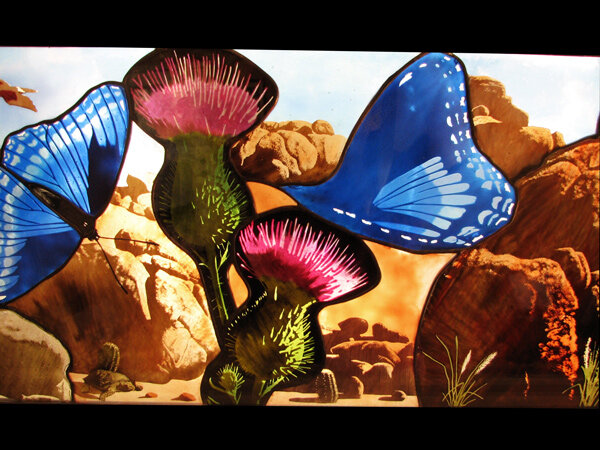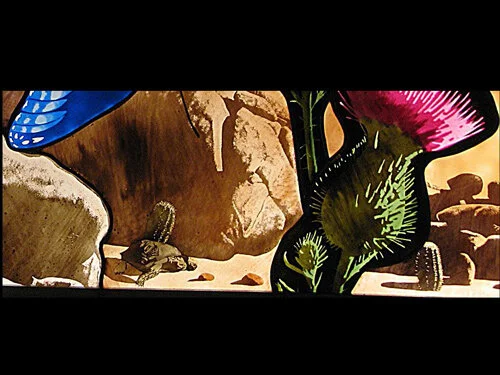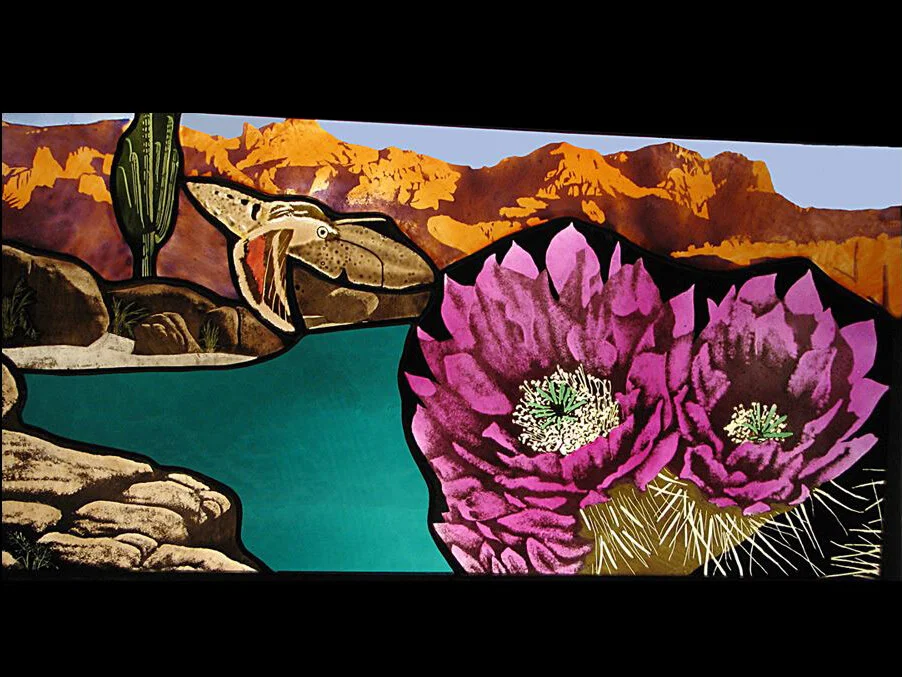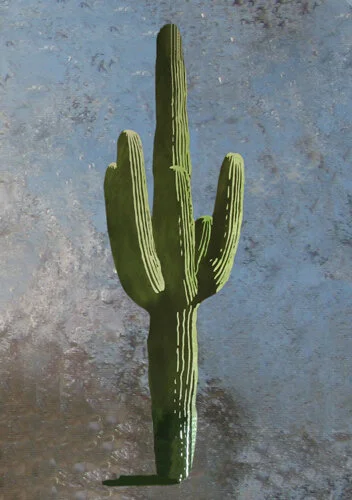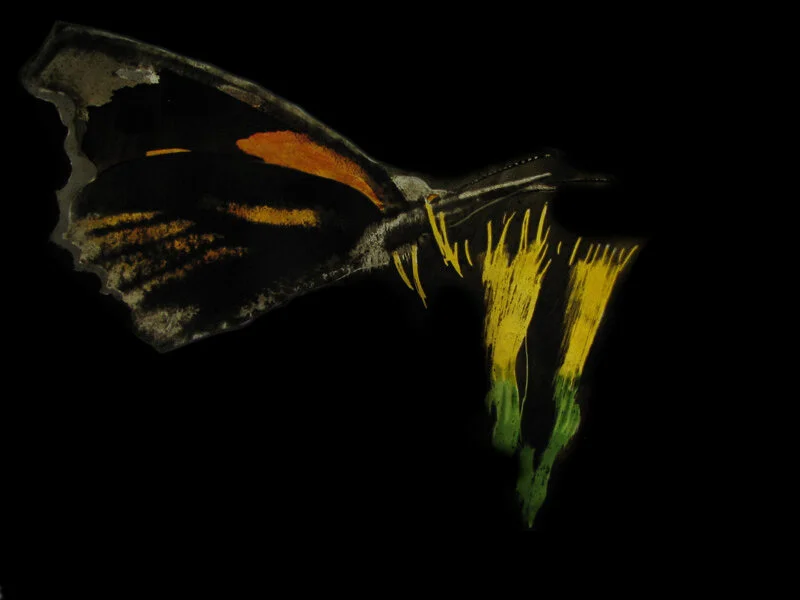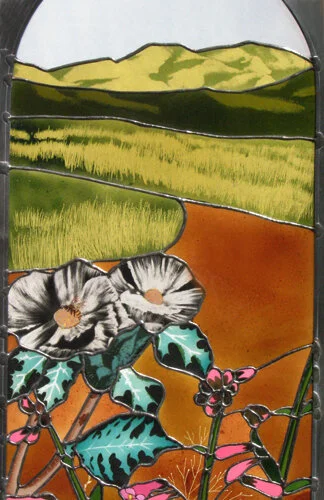Desert Wild
45 x 34 in
details below
Desert Wild (top third) featuring javelina, Gila Woodpecker, White-winged Dove, Cactus Wren, Verdin, Harris’s Hawk, Elf Owl, palo verde, prickly pear, cholla, saguaro.
Desert Wild (bottom third) Featuring canyon tree frog, desert pupfish, flameskimmer, desert poppies, banded gecko, lupine, western diamondback, Harris’s antelope squirrel, Parry’s penstemon, painted lady, Gila monster, Anna’s Hummingbird, hedgehog cactus, curly mesquite, side-oats grama, purple three-awn.
Detail from Desert Wild. Species include Gambels Quail, Cactus Wren, prickly pear, teddy bear cholla, Verdin, saguaro, ant, sixweeks grama.
More Desert Wild details below.
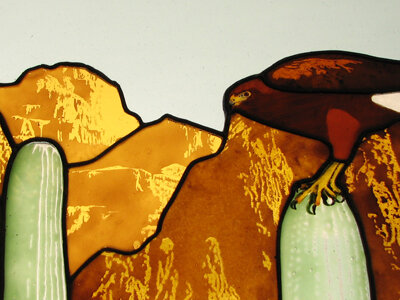
Harris's Hawk
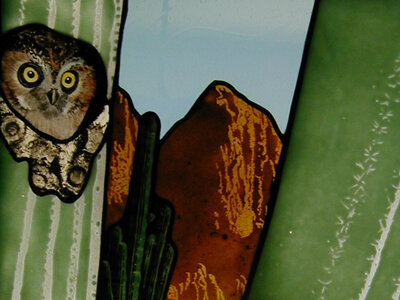
Elf Owl and saguaro
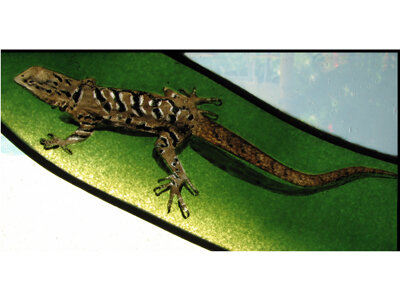
ornate tree lizard
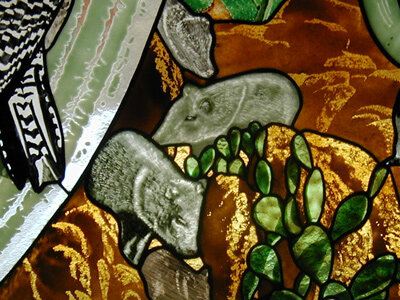
Javelina, prickly pear cactus
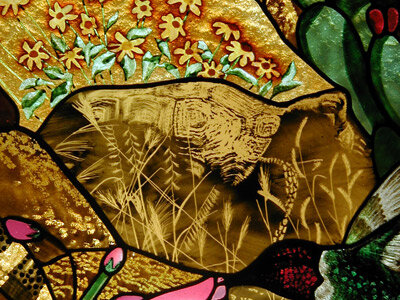
Sonoran desert tortoise, side-oats and six weeks grama, purple threeawn, brittlebush
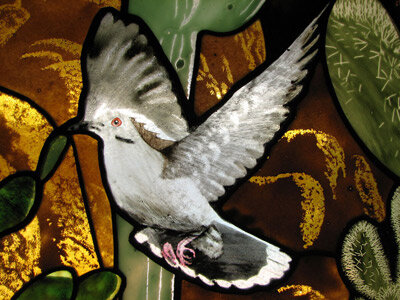
White-Winged Dove
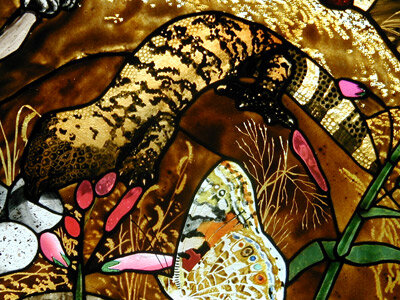
Gila monster
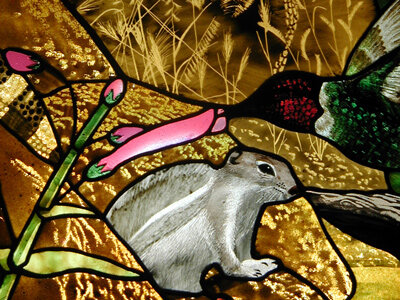
Harris's antelope squirrel, Anna's Hummingbird, Parry's penstemmon, sideoats gramma
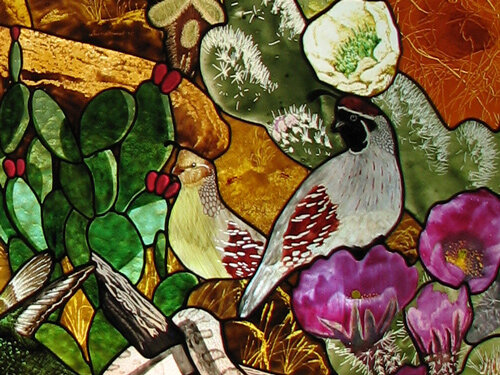
Gambels Quail, cholla, hedgehog and prickly pear cacti
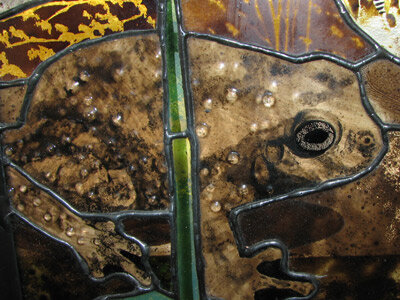
canyon tree frog
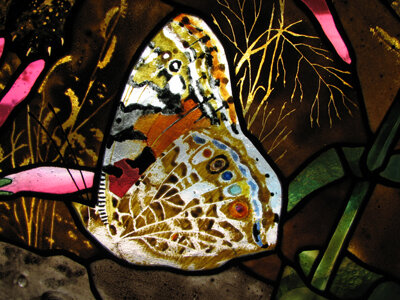
Painted Lady
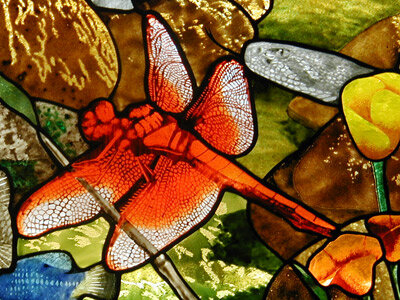
flameskimmer, poppy, western diamondback, desert pupfish

Western banded gecko, lupine, poppy
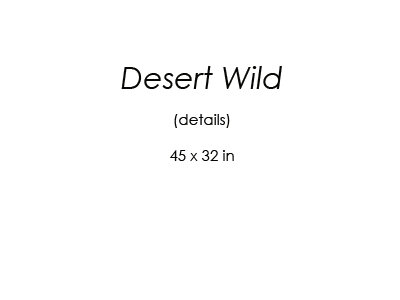
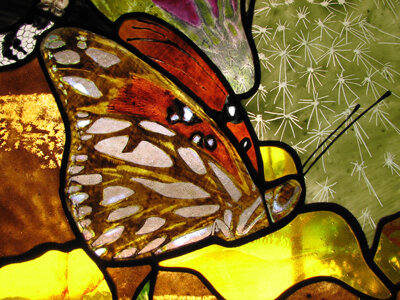
Gulf Fritillary
Desert Vista, 16 x 14 x 123 in
Some common Sonoran desert wildlife are featured in the panel that spans oveer 10 feet. Lesser Nighthawks silently glide through the waning light, capturing prey on the wing. White-lined Sphinx moth nectars at hedgehog blooms. A desert tortoie seeks shelter for the night The iconic desert raptor, Harris’s Hawk, scans the ground for one last meal before roosting.
see details below
Lesser Nighthawks Chordeiles acutipennis and chia Salvia carnosa
Low flying nightjars emit eerie, muffled trills as they silently and aerobatically cut through the air hunting insects on the wing, mouth agape. These crepuscular arid-land dwellers forage alone, paired or in family groups over great distances. They are cryptic and lay two eggs on the ground. They are tolerant of temperature extremes, fluttering their gular to cool and going into extended torpor during cold spells. North American populations winter in Central and South America. Their return to the desert heralds’ warm months ahead.
Parry’s Penstemon Penstemon parryi
The brilliant, trumpet shaped flowers of Parry’s Penstemon attracts hummingbirds and native bees.
Common Raven Corvus corax
From tundra to desert, Ravens are among the most widespread, naturally occurring birds worldwide, preferring wild landscapes. Waves of ravens are seen flocking to roosts sites and forage grounds. They prove their prowess in witty, sometimes daring ways. One flew upside down for half a mile while another was hung by its’ claws from a tree, then dropped upside down to a wolf kill and lay motionless, as though on a dare. Pairs perform graceful, synchronized courtship flights and mate for life, though not always monogamously. Both male and female raise young.
Ravens are among the most intelligent birds. They have complex social behaviors and a wide range of vocalizations, including mimicry. Their distinctive low croak is heard from afar. They can live up to fifteen years in the wild.
Hedgehog cactus Echinocereus englemannii and white-lined sphinx moth Hyles lineata
Sphinx moths are large, widespread species with rapid wingbeats that allow them to hover conspicuously while nectaring, hence their nickname “hummingbird moth”.
Stained Glass: Studies and Samples
Ocotillo
Saguaro
Snout on turpentine bush
Black-tailed rattlesnake
Turpentine bush and New Mexican thistle
Ocotillo
Anna’s Hummingbird on Parry’s penstemon
Greater Roadrunner (ground cuckoo)
Harris’s Hawk
Harris’s Hawk
Greater earless lizard



